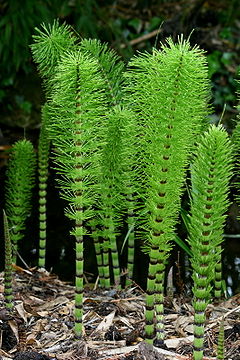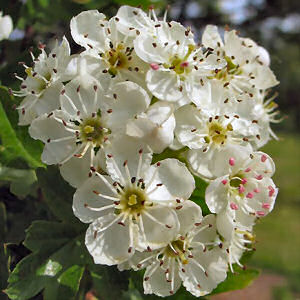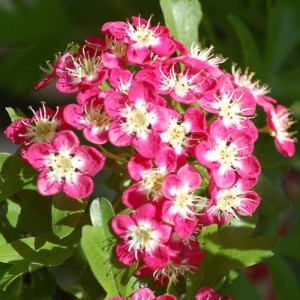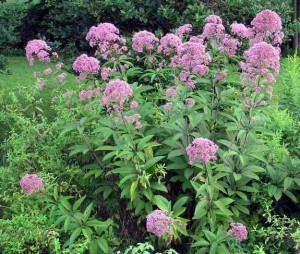(Hyssopus officinalis)
| Hyssop is a name of Greek origin. The Hyssopos of Dioscorides was named from azob (a holy herb), because it was used for cleaning sacred places. It is alluded to in the Scriptures: 'Purge me with Hyssop, and I shall be clean. |
Hyssop (Hyssopus) is a genus of about 10-12 species of herbaceous or semi-woody plants in the family Lamiaceae, native from the east Mediterranean to central Asia.
They are aromatic, with erect branched stems up to 60 cm long covered with fine hairs at the tips. The leaves are narrow oblong, 2–5 cm long.
The small blue flowers are borne on the upper part of the branches during summer. By far the best-known species is the Herb Hyssop (H. officinalis), widely cultivated outside its native area in the Mediterranean.
Note that anise hyssop, Agastache foeniculum (also called blue giant hyssop) is a very different plant and not a close relation although both are in the mint family. Anise hyssop is native to much of north-central and northern North America.
 |
| Herb Hyssop Hyssopus officinalis |
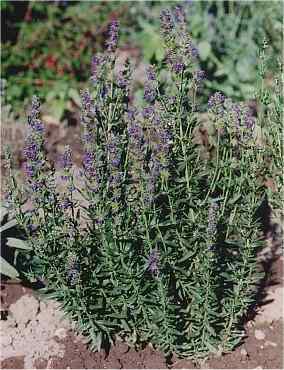 |
| Herb Hyssop Hyssopus officinalis |
 |
| Herb Hyssop Hyssopus officinalis |
Properties: diaphoretic, expectorant.cholagogue, stimulant, vulnerary,
What it affects: lungs, sinuses, and circulation.
Preparation and amount:
Infusion: steep 5-15 min.1-2 cups daily or frequently.
Tincture: drink1-2 tsp. frequently
Powder: 10 0# capsules frequently.
Purposes:
Internally, hyssop is used in the treatment of lungs ailments, specially chronic catarrh. It is a valuable expectorant, promoting expulsion of mucus from the respiratory tract and thus relieving congestion. It is used for coughs and colds, due to congestion.
Hyssop is used the same as sage, with which it is sometimes combined, to a gargle for a sore throat. It is used for colds, coughs, asthma, sluggish circulation, and weak digestion. It regulates blood pressure, dispels gas, and helps with breast and lung problems, nose and throat infections, mucous congestion in the intestines,asthma, scrofula, dropsy, and jaundice. A warm infusion mixed with equal parts of horehound, is good for asthma and heavy mucous conditions. The infusion of hyssop alone is helpful for gas and to promote sweating, when trying to break fever. A decoction will help relieve inflammations.It is used for epilepsy, gout, and weight problems.
Externally, hyssop is used for the healing of wounds, Poultices from fresh green hyssop help heal cuts. A fomentation made from the leaves will relieve muscular rheumatism and bruises. A decoction can be used as a wash for burns, bruises, skin irritations, and as a gargle for sore throat or chronic catarrh.
Warning:
Do not use extensively for extended periods.
Plant Description
Plant Description
Hyssop belongs to the mint family. Hyssop is an erect perennial herb with slender square stems. Hyssop can reach a height of 60 cm. The small pointed leaves are positioned opposite. Hyssop flowers from summer to autumn. The hyssop flowers are purple-blue in colour, but some cultivars have pink or white flowers. The hyssop flowers produce a strong scent, which attracts bees.The small blue flowers are borne on the upper part of the branches during summer. By far the best-known species is the Herb Hyssop (H. officinalis), widely cultivated outside its native area in the Mediterranean.

